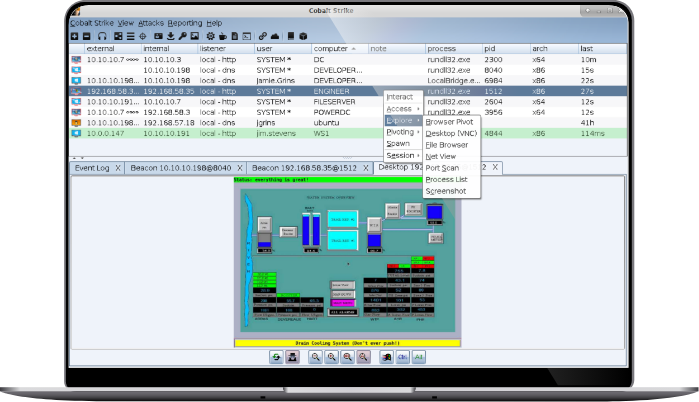
Check your inbox and click the link to confirm your subscription. Our detection opportunities from last year’s Threat Detection Report remain effective. A deep dive into specifics around cobalt strike malleable c2 profiles and key information that is new in cobalt strike 4.6. The security community has shared invaluable public resources on analyzing and detecting Cobalt Strike. Keep in mind that although many of these methods of detection can be easily bypassed with changes to the Cobalt Strike configurations, we highly suggest using them as a stopgap until your teams develop more advanced methods.

Some of the more common detection strategies documented in public reporting include: I received an email today, stating that someone or group had installed something called Cobalt Strike Beacon on all of my devices, and if I didnt pay they were going to release the information that they had 'downloaded' to their servers. If you haven’t already, we invite you to read part 1 first: Cobalt Strike: Using Known. This analysis includes decryption of the C2 traffic.

COBALT STRIKE BEACON PORTFOWARD FULL
In this blog post, we will analyze a Cobalt Strike infection by looking at a full packet capture that was taken during the infection. Luckily for defenders, over the course of this past year the security community has produced a plethora of great technical analysis and detection opportunities around preventing and investigating Cobalt Strike. We decrypt Cobalt Strike traffic using one of 6 private keys we found. The security community is embracing the fact that whatever functional label you place on Cobalt Strike, it’s here to stay, it’s implicated in all variety of intrusions, and it’s our duty to defend against it. Some of the most notorious ransomware operators- including groups like Conti, Ryuk, and REvil/Sodinokibi-are known to rely heavily on Cobalt Strike in their attacks. And as we loaded up the new binary, we can see that it is another 32-bit DLL, about 211KB in size. Its speed, flexibility, and advanced features are likely contributing factors as to why ransomware attacks have been ticking upward in recent years. This time, it appeared to be the Reflective Loader used by the Cobalt Strike Beacon. This is straight forward to do, and only requires an additional two. Adversaries-ransomware operators in particular-rely substantially on Cobalt Strike’s core functionalities as they seek to deepen their foothold in their victims’ environments. The Jump function that can be run from a Cobalt Strike beacon also writes a file. This feature initiates a connection to the forward host/port from your Cobalt Strike client. Use the rportfwdlocal command to setup a reverse pivot through Beacon with one variation. The syntax for rportfwd is: rportfwd bind port forward host forward port. Cobalt Strike has never been more popular, as adversaries are increasingly adopting it as their favorite C2 tool. Cobalt Strike tunnels this traffic through Beacon.


 0 kommentar(er)
0 kommentar(er)
